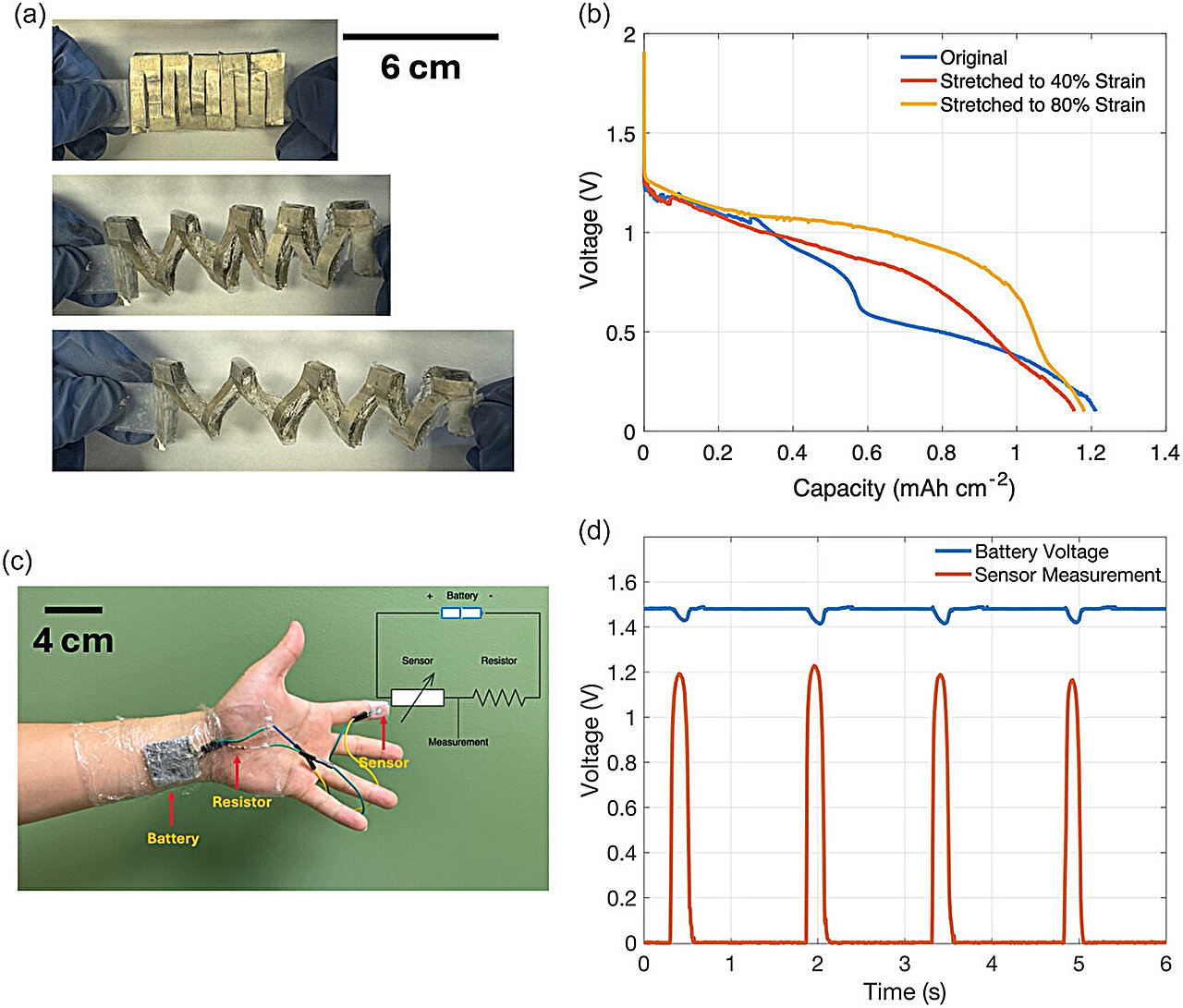Summary
An eco-friendly battery made from lemon-like acids, gelatin, and biodegradable metals may soon power the next generation of wearables and medical implants. Researchers at McGill Universitys Trottier Institute for Sustainability in Engineering and Design have created a flexible, eco-friendly battery…
Source: Interesting Engineering

AI News Q&A (Free Content)
Q1: What are the key components of the eco-friendly battery developed by researchers at McGill University, and how do they contribute to its sustainability?
A1: The eco-friendly battery developed by researchers at McGill University is composed of lemon-like acids, gelatin, and biodegradable metals. These components are chosen for their sustainability as they are biodegradable and minimize environmental impact. The use of natural acids mimics the electrolyte function in traditional batteries, while gelatin serves as a biodegradable binder, and the metals are selected for their capability to degrade without harmful residues, making the battery an environmentally friendly alternative.
Q2: How does the flexible nature of the battery impact its potential applications in wearables and medical implants?
A2: The flexibility of the battery is a crucial feature that enhances its application in wearables and medical implants. Flexible batteries can be integrated into devices that require conformability to the human body's contours, such as smartwatches, fitness trackers, and implantable medical devices. This adaptability not only improves user comfort but also expands the range of motion and durability of the devices they power.
Q3: What recent advancements in flexible battery technology have been reported in scholarly articles?
A3: Recent advancements in flexible battery technology include a novel method using electrophoretic deposition to create a membrane-electrode assembly for flexible batteries. This technique provides a simple, low-cost manufacturing process while maintaining high energy capacity. Additionally, research on quantum harmonic oscillator batteries has shown potential for increased energy storage when tuned to specific frequencies, though stability remains a challenge.
Q4: What are the potential health and environmental benefits of using biodegradable battery materials in medical implants?
A4: Using biodegradable materials in medical implants offers significant health and environmental benefits. Biodegradable batteries eliminate the need for surgical removal, reducing patient risk and healthcare costs. Environmentally, these materials decompose naturally, reducing electronic waste and minimizing ecological impact. This aligns with sustainable healthcare practices by promoting safety and environmental responsibility.
Q5: How does the development of eco-friendly batteries align with global sustainability goals?
A5: The development of eco-friendly batteries supports global sustainability goals by reducing reliance on non-renewable resources and minimizing environmental pollution. These batteries contribute to the reduction of electronic waste and carbon footprint, aligning with sustainability objectives to preserve natural resources and enhance ecological health. Additionally, they support the transition to green energy solutions, promoting long-term environmental stewardship.
Q6: What challenges do researchers face in optimizing the performance of biodegradable batteries for practical use?
A6: Researchers face challenges such as ensuring that biodegradable batteries maintain stable performance in various environments, including the human body. Factors like moisture, temperature, and mechanical stress can affect battery longevity and efficiency. Additionally, achieving the right balance between biodegradability and electrical performance remains a significant hurdle, requiring innovative materials and design solutions.
Q7: What are the implications of using triboelectric nanogenerators in medical implants, and how do they compare to traditional battery technologies?
A7: Triboelectric nanogenerators (TENGs) offer a promising alternative to traditional batteries in medical implants by providing a non-invasive, real-time energy source. They convert mechanical energy into electricity, which can be harnessed from bodily movements. Compared to conventional batteries, TENGs reduce surgical risks and offer enhanced design flexibility. However, maintaining stable operation within the body remains a challenge, as does ensuring reliable long-term performance.
References:
- Lorne Trottier - Wikipedia
- McGill University Faculty of Engineering - Wikipedia
- Novel one-step electrophoretic deposition of membrane-electrode assembly for flexible-batteries application
- Emerging Triboelectric Nanogenerators for In-Body Implantation
- Biodegradable Implantable Electronics with Wireless Technology for Real-Time Clinical Applications





